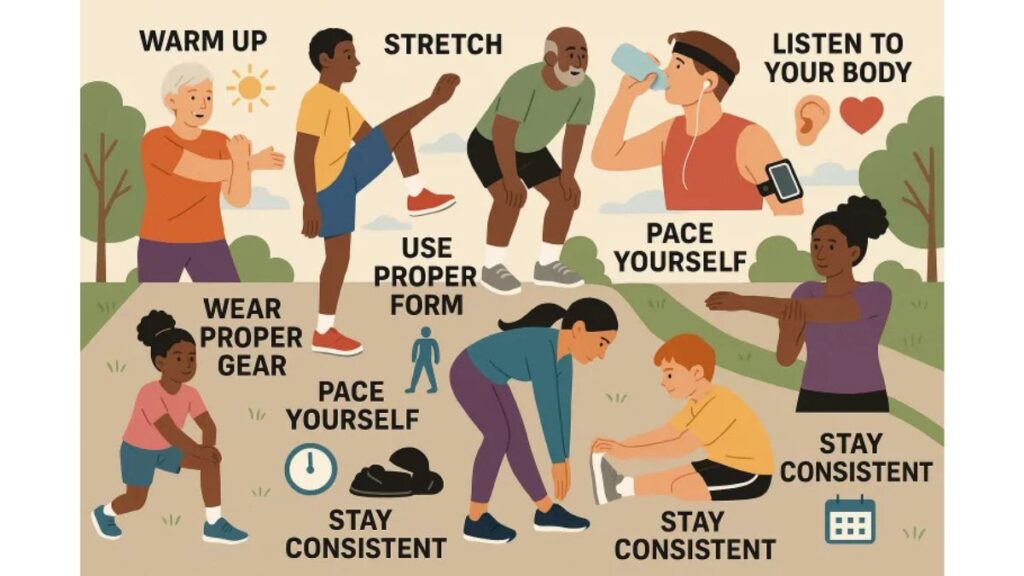Staying active offers countless benefits, from improved cardiovascular health to better mood and mobility. However, physical activity—particularly exceptionally high-impact or repetitive-motion sports—can come with risks. Many common injuries stem from overuse, poor form, inadequate warm-ups, or skipping essential recovery time. Fortunately, scientific research continues to shed light on effective ways to minimize these risks and support long-term athletic health. Incorporating strength training, dynamic stretching, and proper hydration into your routine can significantly lower the likelihood of strains, sprains, and joint issues.
Equally important is listening to your body and knowing when to rest. Recovery is not merely about taking a break; it is essential for improving performance and preventing injuries. Guidance from professionals in fields like sports medicine can help individuals better understand how biomechanics, conditioning, and personalized training plans contribute to staying injury-free. With the proper knowledge and habits, athletes of all levels can enjoy active lifestyles while reducing the chances of setbacks.
Warm-Up and Cool Down
A proper warm-up and cool-down are essential for safe participation in sports and exercise. Warming up involves gradually increasing intensity with dynamic movements like arm circles and high knees, which elevate heart rate and prepare muscles and joints. Spending five to ten minutes on this improves flexibility and reduces the risk of injury.
Cooling down is equally important. Stopping suddenly can lead to dizziness or stiffness, so instead, engage in five to ten minutes of gentle movement followed by static stretches for major muscle groups like hamstrings and quadriceps. This helps with muscle relaxation and flexibility while aiding in removing metabolic waste. Overall, adequate warm-up and cool-down routines significantly lower the risk of sports injuries for all fitness levels.
Use Proper Technique
Using the correct form is essential in any physical activity, whether it’s weightlifting, running, or team sports. Poor techniques, such as having a rounded back during lifts or improper knee alignment in squats, can lead to injuries and chronic pain. To master proper technique, working with certified trainers or experienced coaches who can provide valuable feedback and hands-on instruction is essential. You can also use online resources for video tutorials and detailed breakdowns. Investing time learning and refining your movements will enhance your performance and reduce the risk of injuries throughout your fitness journey.
Wear Appropriate Equipment
Choosing the right equipment is crucial for a productive workout and injury prevention. Footwear is particularly important; runners need shoes with cushioning and support tailored to their gait, while sports like basketball and tennis require shoes with reinforced sides and ankle support. Poorly fitting or worn shoes can lead to serious injuries like plantar fasciitis and shin splints.
Don’t overlook protective gear like helmets and padding, which are essential for safety. Regularly inspect your equipment for wear; replace shoes every 300–500 miles and check helmets after impacts. Investing in quality, sport-specific gear and maintaining it is key to prevention. Consult retailers or physical therapists for personalized recommendations if needed.
Listen to Your Body
It’s crucial to pay attention to your body’s signals. Discomfort, pain, swelling, or chronic fatigue are warning signs that shouldn’t be ignored. Ignoring “red flag” pain can turn minor issues into serious injuries, like muscle tears or stress fractures.
Differentiate between normal post-exercise soreness and actual pain. If you experience persistent discomfort or unusual weakness, stop the activity and rest or seek professional advice. Taking prompt care helps shorten recovery and maintain long-term function. By respecting your body’s limits, you’ll stay active and progress toward your goals.
Maintain Hydration and Nutrition
Hydration and nutrition are essential for injury prevention. Even slight dehydration can cause muscle cramps, impair coordination, and increase fatigue, leading to injuries. Drink water regularly, especially before, during, and after physical activity. For intense sessions, consider sports drinks with electrolytes to replace lost salts.
Inadequate fueling is another risk factor. Ensure your diet includes complex carbs for energy, lean protein for muscle repair, and healthy fats for sustained performance. Proper nutrition supports recovery, maintains tissue integrity, and reduces injury risk. Adequate hydration and proper nutrition are essential for safe training and enhancing strength and endurance.
Incorporate Cross-Training
Focusing too much on one sport can strain specific muscles and joints, leading to overuse injuries. Cross-training diversifies your routine by mixing different workouts to balance muscle development and improve overall fitness while allowing recovery for overworked areas. For example, combining running with swimming or cycling reduces repetitive knee and foot stress.
Cross-training also helps correct muscle imbalances, improve coordination, and boost flexibility. Activities like yoga and Pilates offer strength training with minimal joint strain, making them excellent choices for athletes in high-impact sports. A varied regimen builds total-body resilience, helps prevent injuries, and keeps motivation high.
Engage in Strength and Conditioning
Strong, balanced, well-conditioned muscles are your best defense against sports injuries. Aim for two to three weekly strength training sessions to boost core stability and functional movement. Focus on exercises like planks, bridges, squats, lunges, and controlled rotations to strengthen the muscles around your spine, hips, and lower body, which are common injury sites.
A well-rounded conditioning program should target all major muscle groups, correct imbalances, and enhance muscular endurance. This improves athletic performance, promotes joint alignment, and helps absorb the demands of intense exercise. Regular strength training can reduce fall risk, enhance coordination and agility, and support confident movement as you age.







